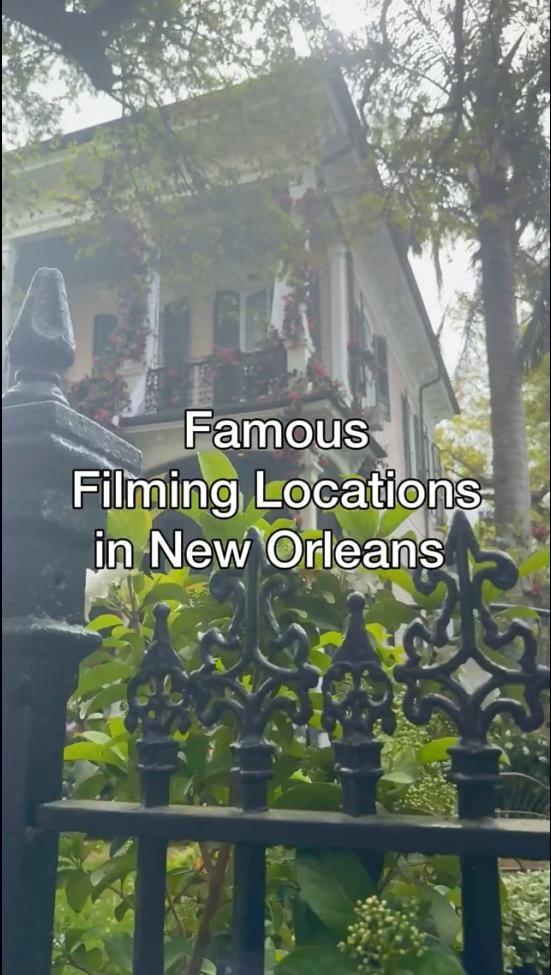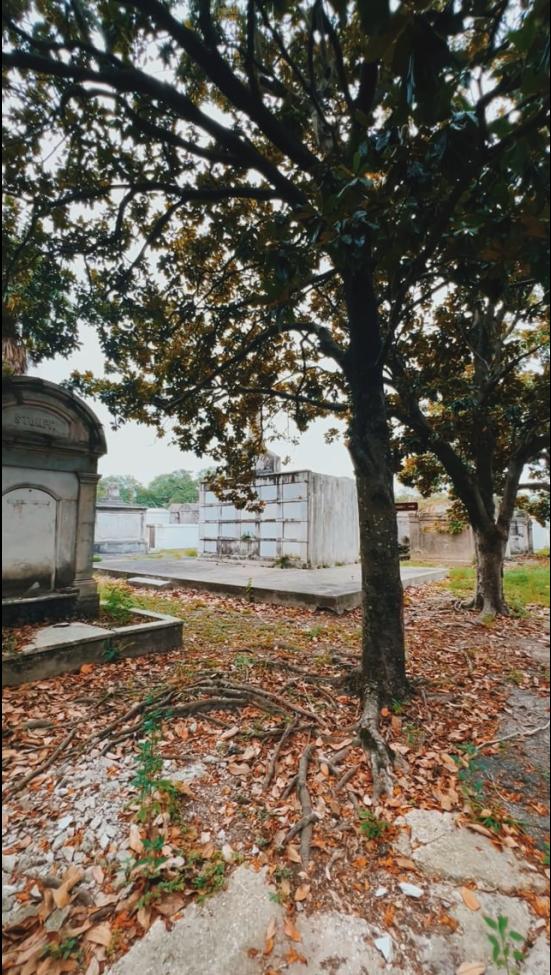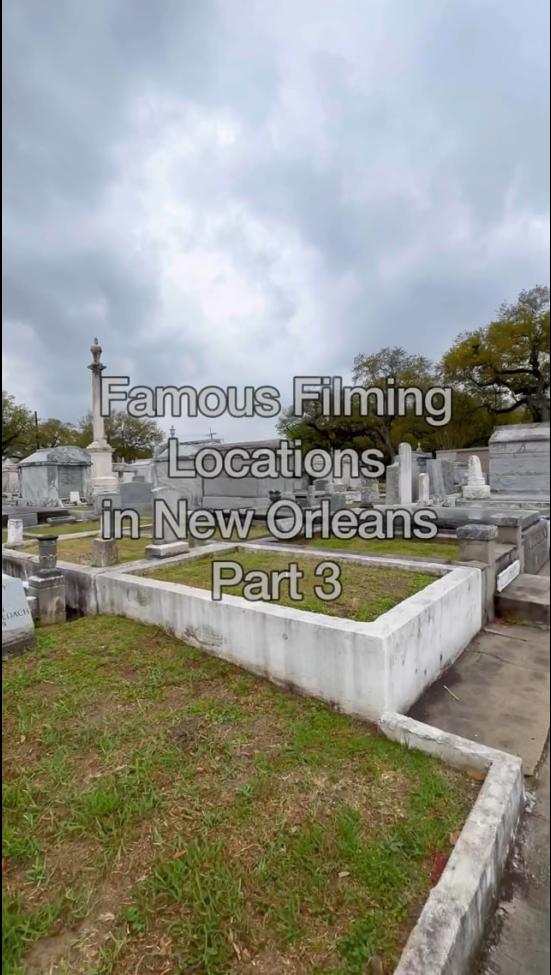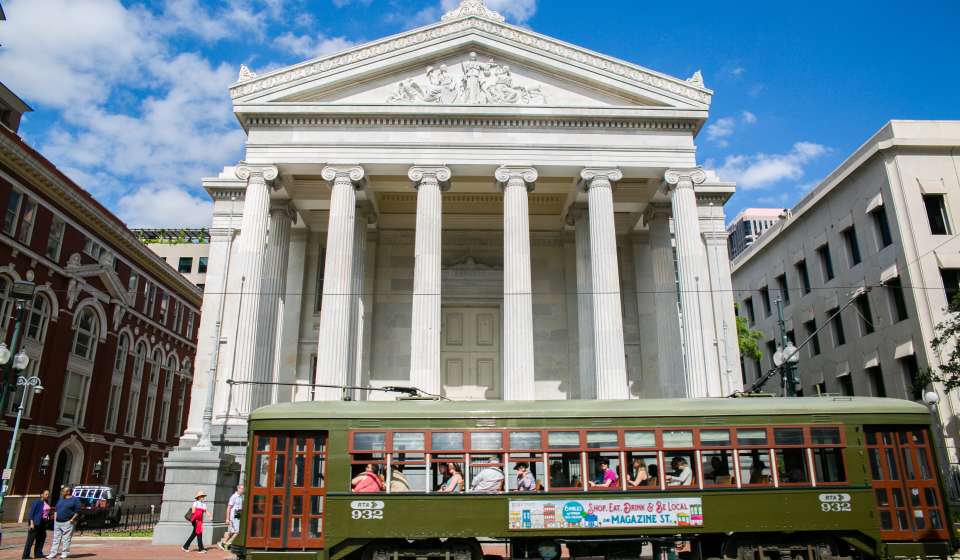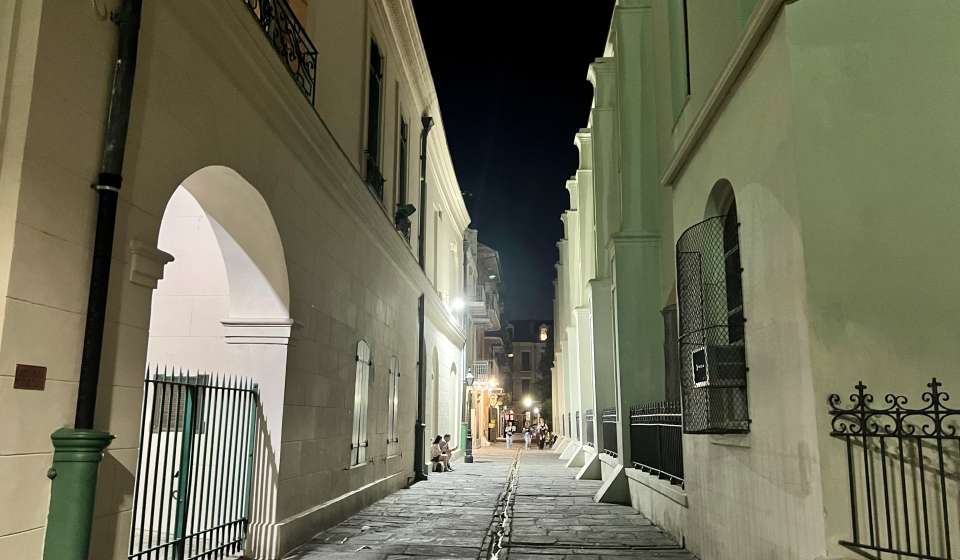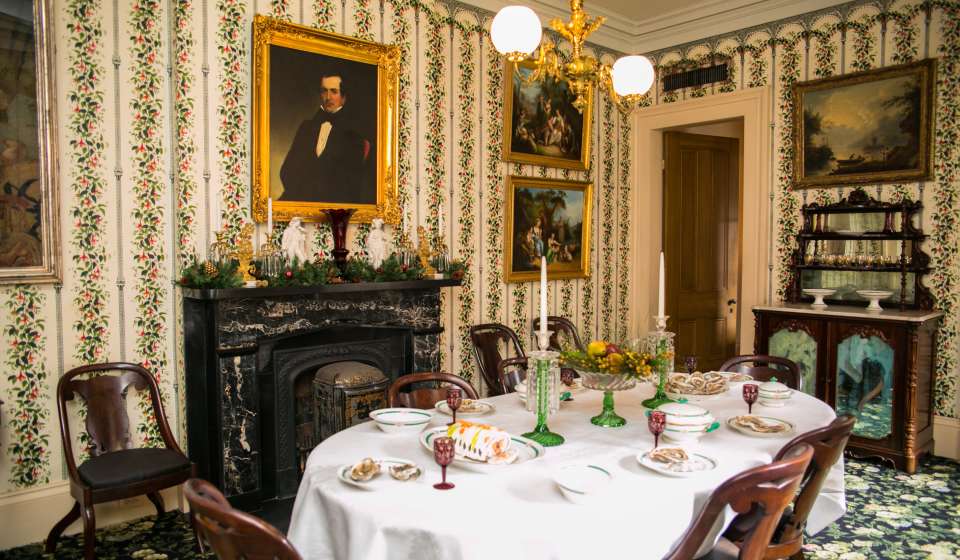Whether or not you believe in the supernatural or tales of vampires and the loup-garou, over 300 years of history and legend have forever marked New Orleans as a hotspot for both the spiritual and the things that go bump in the night.
Vampires in particular have captured the imaginations of both locals and visitors alike over the years – see TV shows like True Blood and The Originals and even the city’s Vampire Café. Some of the most famous (fictional) inhabitants of the city come from the now-deceased local literary legend Anne Rice, particularly the infamous cast of bloodsuckers from her Interview with the Vampire novel series. With so much of New Orleans’ historic architecture still intact, the 2022 AMC series – like its 1994 film predecessor – was filmed on-site in NOLA. Check out this list of iconic filming locations to step into the shadows of Louis and Lestat as you explore the city’s rich history and culture.
Gallier Hall (545 St. Charles Ave.)
Located on Lafayette Square in Downtown, the beautiful Gallier Hall served as New Orleans City Hall for over a century. The building was named for its architect, James Gallier, Sr. (who also constructed the famous Pontalba Apartments) and has played host to many famous guests – both living and deceased during their visits. Presidents Cleveland, Theodore Roosevelt, and Harding, Russian Grand Duke Alexis Romanoff, and the King and Queen of Spain were all received here, and Confederate President Jefferson Davis, General Beauregard, Ernie K-Doe, and Mardi Gras World founder Blaine Kern all laid in state here. During the show, you can clearly see the building’s Greek Revival exterior during a Mardi Gras parade.
Saenger Theatre (1111 Canal St.)
The Saenger brings the Roaring 20s to the modern day. Even after damage during Hurricane Katrina, the theater was restored to its original, elegant design, which was meant to recall an Italian Baroque courtyard. As such, the Saenger features Greek and Roman statues, a ceiling filled with stars and projections of moving clouds and other magnificent details. After you get your pictures out front, be sure to check out the Saenger’s calendar to catch a musical, concert, or comedy show!
Latrobe’s (403 Royal St.)
Latrobe’s on Royal once served as the Louisiana State Bank, and its claim to fame comes not from events that occurred within its walls but for the architect that designed it. This event hall is named after the architect Benjamin Henry Latrobe, who became known as the “Father of American Architecture.” Latrobe designed many well-known and significant structures, including the US Capital, the porticos of the White House, and the Baltimore Basilica, and he helped develop the nation’s waterworks system in order to help combat the spread of yellow fever.
Pirate’s Alley
This stretch of cobblestone lies between St. Louis Cathedral and the Cabildo in the heart of the French Quarter. For a path that only extends one block, the alley has its fair share of legends (particularly ghost stories) attached to it. No one can say for certain whether it truly was a hangout for local pirates (like Lafitte’s Blacksmith Shop) – especially since the alleyway runs between a church, the Old Spanish Governor’s Mansion, and the Spanish dungeon – but it’s speculated the name stuck due to how often said pirates were carted through the passage on their way to spend a night in prison. Even still, the alley and adjacent buildings evoke a narrative that’s hard for artists of all stripes, including author William Faulkner, to ignore.
Ursuline Convent (1100 Chartres St.)
The Old Ursuline Convent is the oldest building in the Mississippi River Valley. Completed in 1752, it is also the oldest surviving example of French colonial period architecture in the United States. Walking through the structure and the gardens is truly like stepping back in time, and, like many other French Quarter buildings, has a paranormal legend attached. The tale of the Casket Girls revolves around vampires – another reason that the convent made a perfect spot for filming.
Beauregard-Keyes House (1113 Chartres St.)
This beautiful manor and gardens sit across the street from the old Ursuline Convent in the French Quarter. The house itself was first built in 1826 while its famous parterre garden was added some time in the 1830s. Like many historic homes in New Orleans, the Beauregard-Keyes House is named for two of its most prominent of its eight residents. Confederate General P. G. T. Beauregard never owned the home but rented it after his return from the American Civil War in 1865 until 1868. Despite his short residence, Beauregard’s name lingers due to its purchase in 1926 by General Allison Owen, who hoped to preserve the property as a memorial to the late General Beauregard. While this effort largely failed, the name still stuck alongside that of the final owner, Frances Parkinson Keyes, who restored the house and established the Keyes Foundation, which still maintains the property as a museum today.
Hermann-Grima House (820 St. Louis St.)
The Hermann-Grima House and Gallier House museums are managed by The Woman’s Exchange, which aims to explore diverse topics, including lives of the houses’ owners and enslaved people, free people of color, open-hearth cooking, mourning rituals, and the entrepreneurial pursuits of women. The Hermann-Grima House features Federalist architecture with Creole adaptations, a 19th-century carriage house, and its still-operable open-hearth kitchen.
Gallier House (1132 Royal St.)
Constructed by famous New Orleans architect James Gallier, Jr. in 1861, this gorgeous townhouse exemplifies the architectural styles that make the city so unique – in particular, the iconic Paris green wrought iron accents – as well as innovative designs for the period. Without a doubt, Rice’s blood-sucking Creole elites would’ve spent time among other well-to-do New Orleanians in manors like this.
Okay Bar (1700 Port St.)
Okay Bar is the quintessential NOLA dive. It boasts a cozy interior and spacious backyard and hosts a myriad of food pop-ups, DJs, markets, and other events. While it’s drastically different than any other location on this list, this inclusive, quirky, community-minded hangout is a snapshot of authentic New Orleans.
St. Maurice Church (612 St. Maurice St.)
This now-deconsecrated church sits in the Lower Ninth Ward. The church itself was completed in 1857, and despite still being in Orleans Parish, the church played a pivotal role in the lives of many residents of neighboring St. Bernard Parish. With its domed, vaulted ceilings, intricate molding, and stained-glass windows, it’s the picture of that classic vampire aesthetic – especially when the sun goes down.
Masonic Cemetery (400 City Park Ave.)
This site is just one of many of New Orleans’ iconic above-ground cemeteries. The land was bought by the local chapter of the Free Masons in 1856 and features some of the more unique and elaborate tombs in the city. Alongside the plethora of Masonic imagery, intricate crypts, and oak-lined walkways make this a perfect locale for a late-night vampire rendezvous.
Derbès Mansion (2257 Bayou Rd.)
Located on historic Bayou Road in the Tremé neighborhood, Derbès Mansion encapsulates mid-19th Century elegance, though with a few idiosyncratic design choices made by the mansion’s primary owner Nicolas Benachi. It sits near the elegant stretch of mansions on the Esplanade Ridge owned by the city’s Creole gentry. Any of Rice’s elegant vampires would feel right at home beneath the gaslight and classical architecture.
